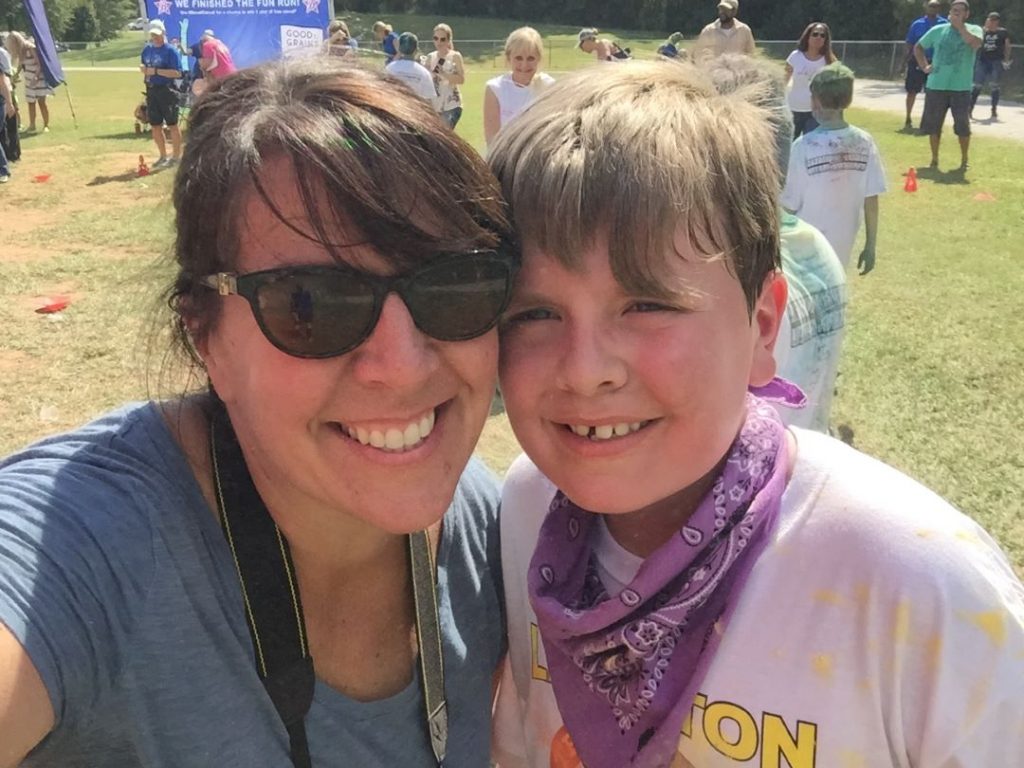When Kristen Dykes goes to the beach, she’s covered. She wears a hat and a long sleeve shirt designed to prevent the sun’s harmful rays from penetrating her skin.
“I had a lot of burns as a child,” said Dykes, 52, who as an adult has had two run-ins with skin cancer.
Sunscreens weren’t as prevalent when Dykes was growing up.
MORE: Woman Raises Puppy for Future as Service Animal
The FDA published its first list of approved ingredients for over-the-counter sunscreens in 1978. At the time, it recommended a minimum SPF of two and a maximum of 15, according to the FDA website. The maximum was upped to 30 in 1993, and the term “broad spectrum” didn’t come into play until 2011.
Dykes said she doesn’t remember her mom slathering them up with sunscreen, and she probably didn’t wear a hat.
“Nobody was worried about it at the time,” she said.
But times have changed, and Dr. Germame Ajebo, an oncologist at the Georgia Cancer Center and assistant professor of medicine at Augusta University, urges people to be sun safe and to use sun protection.
[adrotate banner=”54″]
“Use a broad-spectrum sunscreen that is 30 or higher SPF,” said Ajebo.
Two teaspoons or one ounce is typically sufficient, and he suggests applying it 30 minutes before heading into the sun and reapplying it after getting out of the water.
Also, he suggests staying completely out of the sun between the hours of 10 a.m. and 2 p.m. as the sun’s rays are most intense during that time. Don’t forget the hat and sunglasses that filter out the harmful UVA and UVB rays. And he advises against the use of tanning beds.
Not only is prevention important, knowing the signs of skin cancer is vital. Watch for moles that change in shape, color or size; has three or more colors; is asymmetrical or lost its symmetry; is bleeding, filled with blood or growing. Also check for pigmented lines under fingernails and toenails.
Like Dykes, Kerry Register came from the same generation where sunscreen wasn’t a priority.
Register has fair skin, red hair and burns easily. She remembers experiencing severe burns as a child including one summer in Maine when after spending time outside on an overcast day, she was burned so badly, she could barely walk the next day.
Her first experience with skin cancer occurred about two years ago. She had a growth on her hand.
“I knew it wasn’t right,” she said. “I thought it was some kind of wart. It was raised.”
It turned out to be skin cancer.
[adrotate banner=”19″]
Within the past two weeks, Register had an additional 17 spots on her hands removed.
Ajebo said that in many cases, skin cancers are caught in the early stages and can be removed without further treatment.
Even with Register’s 17 spots, the procedure to remove them only took a few minutes, she said.
Dykes’ experience with skin cancer was a little different. Her first case was about seven years ago.
“I was putting on my makeup and right above my eyebrow was a scratch,” she said.
She didn’t think anything of it, but it wouldn’t heal. She decided to have it checked out.
“It was half the size of a pencil eraser,” she said.
The doctor performed a biopsy, which confirmed cancer, and removed about a dime-sized area over Dykes’ eye.

The second cancer Dykes didn’t discover on her own. Dykes said she’s religious about getting her hair done every six weeks. Those regular trips to the hairdresser may have saved her life. The hairdresser noticed a discoloration that wasn’t there the last time she had her hair done.
The doctor said it wasn’t anything to worry about, but Dykes got a second option. That spot turned out to be cancerous as well.
MORE: Crossing Guard Honored for 45 Years of Keeping Children Safe
Dykes said she even had her hairdresser put Dykes’ finger on the spot on her scalp, and she felt nothing.
Nearly 80,000 cases of skin cancer are diagnosed each year resulting in 9,000 deaths, Ajebo said.
Anyone can get skin cancer, regardless of skin color, but people with darker skin typically do not get skin cancer from sun exposure, he said.
Charmain Z. Brackett is the Features Editor for The Augusta Press. Reach her at charmain@theaugustapress.com.
[adrotate banner=”48″]












